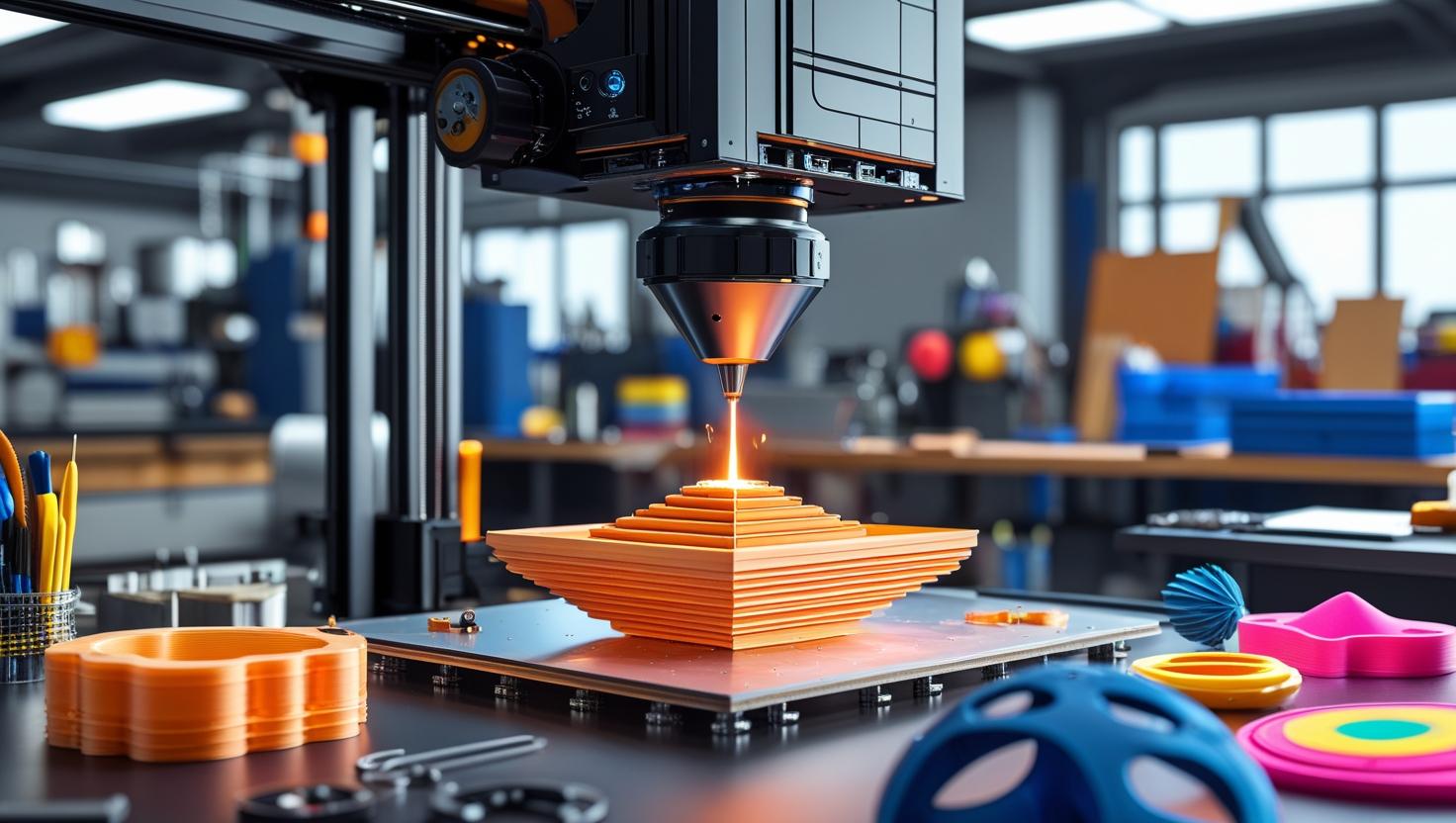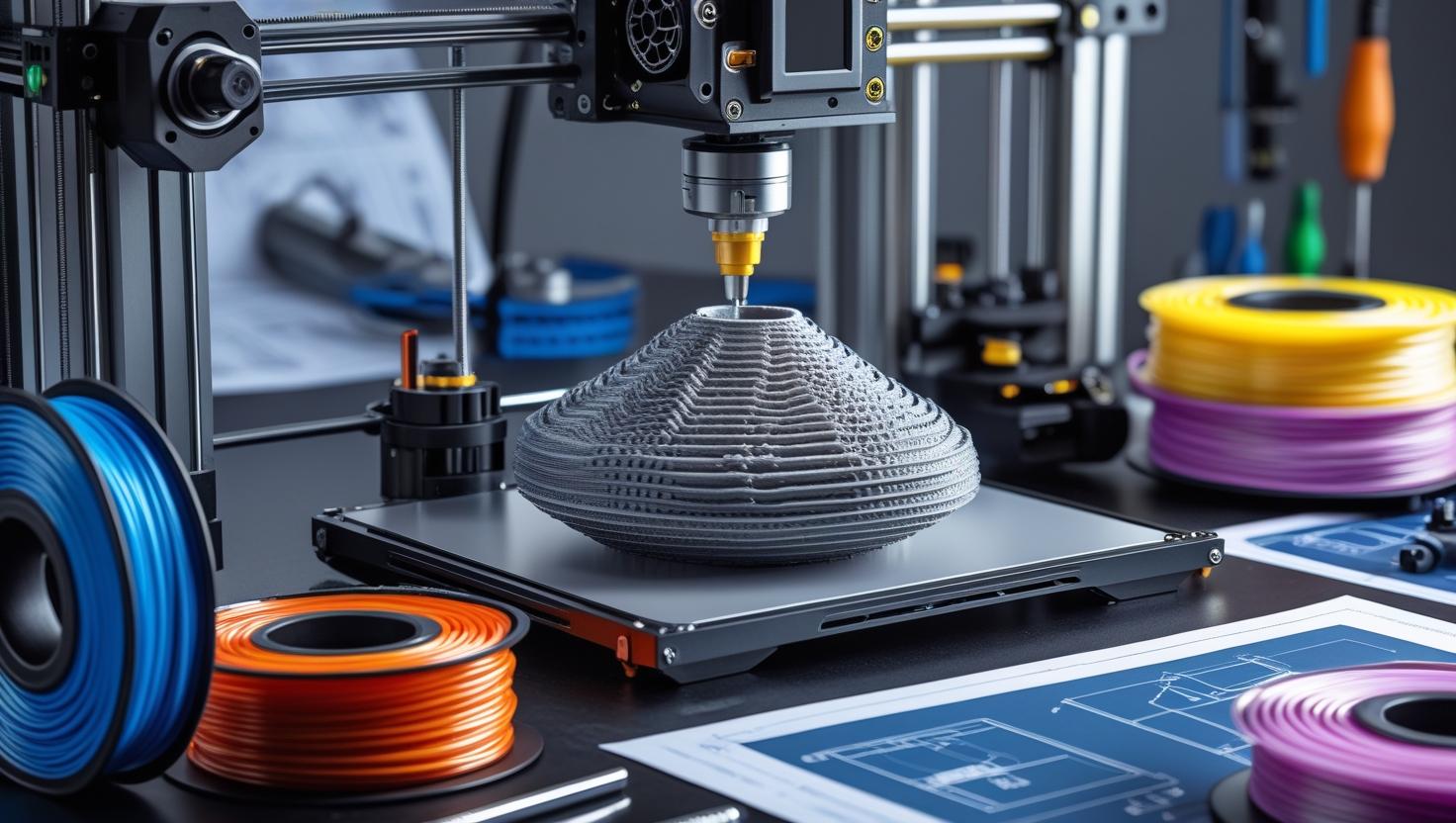The Robotic Additive Manufacturing Market is experiencing a transformative phase, driven by rapid advancements in automation, robotics, and 3D printing technologies. This innovative sector combines the precision of robotic systems with the flexibility of additive manufacturing, enabling industries to produce complex components with unprecedented efficiency and customization. As businesses across aerospace, automotive, healthcare, and other sectors embrace this technology, the market is poised for significant growth. This article delves into the intricacies of the Robotic Additive Manufacturing Market, exploring its key drivers, challenges, applications, and future prospects, offering a comprehensive overview for stakeholders and enthusiasts alike.
The global Robotic Additive Manufacturing Market size is anticipated to grow from USD 2.00 billion in 2025 to USD 3.14 billion by 2030, at a CAGR of 9.5%.
Key Drivers Fueling the Growth of the Robotic Additive Manufacturing Market
Several factors are propelling the Robotic Additive Manufacturing Market forward. The demand for lightweight, durable components in industries like aerospace and automotive is a significant driver, as additive manufacturing allows for optimized designs that reduce weight without compromising strength. Additionally, the push for sustainability is encouraging companies to adopt processes that minimize material waste. The integration of advanced robotics enhances production speed and precision, further boosting market adoption. Moreover, the rise of Industry 4.0 and smart manufacturing is creating opportunities for automation-driven solutions, positioning the Robotic Additive Manufacturing Market as a cornerstone of modern production.
Technological Advancements Shaping the Robotic Additive Manufacturing Market
Technological innovation is at the heart of the Robotic Additive Manufacturing Market’s evolution. Recent advancements include the development of multi-axis robotic arms capable of handling complex 3D printing tasks, enabling the production of larger and more intricate components. Innovations in materials, such as high-performance polymers and metal alloys, have expanded the range of applications for robotic additive manufacturing. Additionally, advancements in software, including AI-driven design optimization and real-time monitoring, are enhancing process efficiency and quality control. These developments are making the Robotic Additive Manufacturing Market more accessible and cost-effective for businesses of all sizes.
Applications of Robotic Additive Manufacturing Across Industries
The versatility of the Robotic Additive Manufacturing Market makes it applicable across diverse sectors. Below are some key industries benefiting from this technology:
-
Aerospace: The aerospace industry uses robotic additive manufacturing to produce lightweight, high-strength components like turbine blades and structural parts, reducing fuel consumption and costs.
-
Automotive: Manufacturers leverage this technology to create customized parts, prototypes, and tooling, accelerating production cycles and enabling rapid design iterations.
-
Healthcare: The medical sector employs robotic additive manufacturing to produce patient-specific implants, prosthetics, and surgical tools with high precision.
-
Construction: Large-scale 3D printing with robotic systems is revolutionizing construction, enabling the creation of complex structures with reduced labor and material costs.
-
Consumer Goods: From customized jewelry to footwear, robotic additive manufacturing allows for personalized products that meet individual consumer preferences.
These applications highlight the transformative potential of the Robotic Additive Manufacturing Market in reshaping traditional production processes.
Market Segmentation and Regional Insights
The Robotic Additive Manufacturing Market can be segmented by technology, material, application, and region. Technologies include fused deposition modeling (FDM), stereolithography (SLA), and selective laser sintering (SLS), among others. Materials range from polymers and metals to ceramics, each suited to specific applications. Geographically, North America leads the market due to its advanced manufacturing infrastructure and significant R&D investments. Europe follows closely, driven by its strong automotive and aerospace sectors. The Asia-Pacific region is emerging as a high-growth market, fueled by rapid industrialization and government support for advanced manufacturing technologies. Understanding these segments is crucial for stakeholders navigating the Robotic Additive Manufacturing Market.
Download PDF Brochure @ https://www.marketsandmarkets.com/pdfdownloadNew.asp?id=13451083
Challenges Facing the Robotic Additive Manufacturing Market
Despite its growth, the Robotic Additive Manufacturing Market faces several challenges. High initial costs for robotic systems and 3D printing equipment can be a barrier for small and medium-sized enterprises. Additionally, the lack of standardized processes and materials can lead to inconsistencies in production quality. Technical challenges, such as limited material options and slower production speeds compared to traditional methods, also pose hurdles. Furthermore, the need for skilled professionals to operate and maintain these systems is a significant constraint. Addressing these challenges is critical to unlocking the full potential of the Robotic Additive Manufacturing Market.
Competitive Landscape of the Robotic Additive Manufacturing Market
The Robotic Additive Manufacturing Market is highly competitive, with key players investing heavily in R&D to gain a competitive edge. Companies like Stratasys, 3D Systems, and EOS are leading the charge in additive manufacturing technologies, while robotics giants like ABB, KUKA, and Fanuc are driving innovation in robotic integration. Collaborations between robotics and 3D printing companies are becoming common, as are partnerships with academic institutions to advance research. This dynamic competitive landscape is fostering innovation and expanding the capabilities of the Robotic Additive Manufacturing Market.

Economic and Environmental Impacts of Robotic Additive Manufacturing
The Robotic Additive Manufacturing Market offers significant economic and environmental benefits. Economically, it reduces production costs by minimizing material waste and enabling on-demand manufacturing, which eliminates the need for large inventories. Environmentally, the technology supports sustainability by reducing energy consumption and waste compared to traditional manufacturing. For example, producing lightweight components for aerospace applications can lower fuel consumption, contributing to reduced carbon emissions. These benefits make the Robotic Additive Manufacturing Market a key player in the transition to sustainable industrial practices.
Future Trends Shaping the Robotic Additive Manufacturing Market
The future of the Robotic Additive Manufacturing Market is bright, with several trends poised to drive growth. The integration of artificial intelligence and machine learning is expected to enhance design optimization and process automation, improving efficiency and reducing costs. The development of hybrid manufacturing systems, combining additive and subtractive processes, will offer greater flexibility. Additionally, the expansion of material options, including biodegradable and composite materials, will broaden the market’s applications. The rise of distributed manufacturing, enabled by robotic additive systems, will also allow for localized production, reducing supply chain dependencies. These trends signal a robust future for the Robotic Additive Manufacturing Market.
Opportunities for Stakeholders in the Robotic Additive Manufacturing Market
The Robotic Additive Manufacturing Market presents numerous opportunities for stakeholders. Manufacturers can leverage this technology to differentiate their products through customization and innovation. Investors have the chance to support emerging startups and technologies that are shaping the future of manufacturing. Educational institutions can play a role by developing training programs to address the skills gap in this field. Governments can support the market through policies and funding for advanced manufacturing initiatives. By capitalizing on these opportunities, stakeholders can drive the growth and adoption of the Robotic Additive Manufacturing Market.
The Future of the Robotic Additive Manufacturing Market
The Robotic Additive Manufacturing Market is at the forefront of the manufacturing revolution, offering unparalleled opportunities for innovation, efficiency, and sustainability. As technologies like AI, advanced robotics, and new materials continue to evolve, the market is set to redefine how industries produce and deliver products. Despite challenges like high costs and the need for skilled labor, the benefits of robotic additive manufacturing—such as reduced waste, enhanced customization, and faster production—make it a game-changer. Stakeholders who embrace this technology and address its challenges will be well-positioned to thrive in the dynamic Robotic Additive Manufacturing Market.
Explore In-Depth Semiconductor & Electronics Market Research – https://www.marketsandmarkets.com/semiconductorand-electonics-market-research-87.html
FAQs
What is the Robotic Additive Manufacturing Market?
The Robotic Additive Manufacturing Market refers to the industry focused on integrating robotic systems with 3D printing technologies to produce complex parts layer by layer, offering precision, scalability, and customization.
What industries benefit from robotic additive manufacturing?
Key industries include aerospace, automotive, healthcare, construction, and consumer goods, where the technology is used for lightweight components, customized parts, and sustainable production.
What are the challenges in the Robotic Additive Manufacturing Market?
Challenges include high initial costs, lack of standardized processes, limited material options, slower production speeds, and the need for skilled professionals to operate systems.
How does robotic additive manufacturing support sustainability?
It reduces material waste, minimizes energy consumption, and enables the production of lightweight components, contributing to lower carbon emissions and sustainable practices.
What are the future trends in the Robotic Additive Manufacturing Market?
Future trends include AI-driven optimization, hybrid manufacturing systems, expanded material options, and distributed manufacturing, enhancing efficiency and application scope.
See The Latest Semiconductor Reports:
Data Center Interconnect Market Size, Share & Trends : https://www.marketsandmarkets.com/Market-Reports/data-center-interconnect-market-40733195.html
Machine Control System Market Size, Share & Trends: https://www.marketsandmarkets.com/Market-Reports/machine-control-system-market-62579001.html
Hydrogen Detection Market Size, Share & Trends : https://www.marketsandmarkets.com/Market-Reports/hydrogen-detection-market-52631881.html
Environmental Remediation Market Size, Share & Trends : https://www.marketsandmarkets.com/Market-Reports/environmental-remediation-market-93290334.html
Control Valve Market Size, Share & Trends : https://www.marketsandmarkets.com/Market-Reports/control-valves-market-111759647.html

